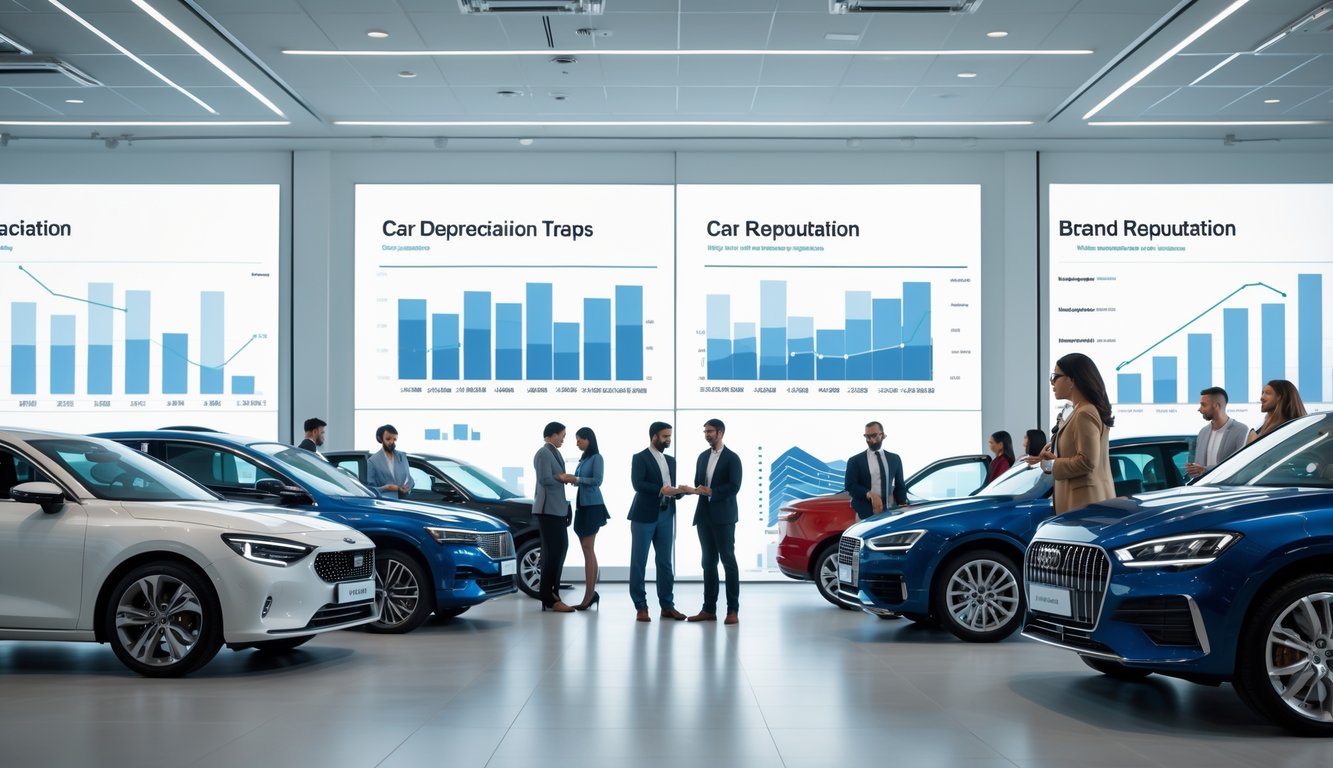
Overestimating Brand Reliability
Brand loyalty just makes me tired. Honda, Toyota, sure, but people cling to these “forever reliable” legends and skip actual research. Like, early turbo engines from “reliable” brands had oil dilution problems, but owners just trusted the logo. I’ve seen people ignore Consumer Reports even while their own Civic’s value tanks.
Popular brands coast on old reputations; the V6 Camry myth doesn’t help if you’re buying a 2022 Corolla Cross with a totally new drivetrain. New problems pop up, depreciation teams up with bad luck, and suddenly your “safe” choice is a lemon. Warranty details and up-to-date reviews matter way more than brand stories—seriously.
Assuming All Used Cars Hold Value
People love saying “used cars are always the smart move.” Really? Last quarter, buyers who financed three-year-old models at peak prices ended up owing more than the car’s worth. GuardianLit’s got a whole breakdown: here. No safety net, just negative equity and a sad trade-in offer. I’ve watched buyers get blindsided when rare trims or missing warranties wipe out 20% more value than average—nobody warned them, not even the forums.
Little tip: check depreciation charts (VIN Audit’s here is halfway decent), and actually read the warranty fine print. A used hybrid might look thrifty, but its future value won’t always match a three-year-old gas sedan. If there’s a theme? Don’t trust shortcuts. This market invents new ways to empty your wallet every year.
Key Factors Driving Car Depreciation Today
Everywhere I look, someone’s either whining their car’s worth half what it was or flexing because their neighbor’s old hatchback didn’t budge. Why? Depends who you ask, but a few things keep popping up in every trade-in horror story. And no, I’m not googling this at Starbucks—I learned the hard way, after three lease buyouts (never again, please).
Mileage and Vehicle Condition
Let’s be honest—if someone tells you a 105,000-mile car is “basically the same” as a 19,000-mile one, they’re either selling you something or just clueless. Dealers will nitpick every scratch; one guy told me, “Minor scuffs cost hundreds at auction.” Awesome, thanks—especially after I gouged my dash with a phone charger. Mileage tanks value faster than recalls—lose 20% with just 10,000 extra miles, or so says this guide.
Low miles and a full service history get all the love, but condition is the silent killer. I’ve seen great engines lose thousands because of weird interior smells (never haul paint thinner, trust me). Small repairs add up: £125 for a scratch, £90 for a bald tire. Sometimes I wonder if the only way to win is never to drive at all—just bubble-wrap the thing and stare at it.
Supply Chain Issues Shaping Prices
So, two years back, my dealer basically accused me of making up the global chip shortage just to get a better deal. Like, yeah, I’m secretly running a semiconductor sweatshop in Taiwan, right? But nope, it’s real: supply chain issues sent almost-new cars into this weird, upside-down market. I saw a 2021 Toyota Corolla on the lot listed for more than the 2023 MSRP. “New stock inbound soon,” they said, for half a year. Okay.
And here’s the thing—random stuff, like basic work vans, suddenly gets valuable. Who’s paying extra for a white van with three hubcaps? But it happens. Once the lots refill, the bargains crawl back and depreciation hits hard, especially if you panic-bought in 2022. Sales managers keep mumbling about auction prices “correcting,” which is code for “your car is worth less and it’s not my fault.” I know the pain—my leased EV dropped £8,000 in ten months. Still bitter.
Economic and Market Influences
Inflation, interest rates, and whatever the Fed does—none of that feels real until you’re trading in and the value’s tanked for reasons nobody predicted. I mean, the real cost of owning a car? It’s not gas or insurance. It’s depreciation, this invisible sucker punch. When the economy gets shaky, people stop buying new, so used cars get hot—until, suddenly, they don’t. Then rates jump, or some policy changes, and your car’s value does a magic trick and disappears.
I’ve watched two people buy nearly identical cars, just a few months apart, and one lost thousands more than the other after a single “market update” email. Finance managers at big dealers literally redo payment math while sweating through their shirts. Is there any stability? Not really. I keep telling people, “Nobody knows what your five-year-old VW is worth.” I mean it. The so-called experts? They’re guessing just like us.
Brand and Model Reputation: Winners and Losers

Okay, so some brands just refuse to lose value, no matter how many are out there. Others? Drop like a rock the second you sign the paperwork. Reputation matters—until it doesn’t, and then you’re just confused.
Why Honda and Toyota Hold Up
My neighbor never shuts up about his 2008 Honda Accord still being worth a ridiculous amount. And he’s right. Toyota’s the other one—somehow, they outlast everything for resale. Kelley Blue Book, Edmunds, all those sites—they keep repeating it: Honda and Toyota win resale, every year, forever, apparently.
It’s not magic. It’s just reliability, cheap repairs, and buyers who trust the badge. Dealers love to remind me when they’re lowballing my trade. Hondas feel like the default, Toyotas are just stubborn about losing value (especially Camry and Tacoma—those things are cockroaches). I’ve seen base Corollas at auction go for prices that make zero sense. Why? “Known cost of ownership.” Guess that’s what you get for being boring and not breaking down.
Depreciation in Luxury Brands: BMW, Mercedes-Benz, Jaguar
Here’s where it gets dumb: people think fancy badges mean their car’s a piggy bank. Nope. My buddy’s 2021 BMW 5-Series lost value faster than a carton of milk. Numbers don’t lie—BMW, Mercedes, Jaguar, all of them just torch money in the first few years. Sometimes 40-60% gone, and you didn’t even get to enjoy the heated steering wheel.
And then there’s maintenance. You want to pay $1,500 for a headlight? Didn’t think so. Mercedes E-Class, Jaguar XF—they’re basically “renting” status. There’s some weird Porsche 911 exception, but even then, everyone argues about which year is the “good” one. None of this helped my friend’s trade value, by the way.
Jeep Wrangler, Subaru, and Niche Market Surprises
Last winter, I watched a Jeep Wrangler, half rust, half paint, sell for way too much. But that’s just what Wranglers do. They’re immune to depreciation. It’s a cult thing. CarGurus puts them near the top for slowest value loss, and I believe it.
Subaru is another one. Outbacks and Foresters, especially—people act like they’re indestructible. In snow country, buyers will pay anything for a used Subaru. An auction guy told me, “If it’s got a flat-four, it’ll sell.” Meanwhile, Fiat and Alfa Romeo? Everyone avoids them, even if they’re basically free. And then, classic Mustangs sometimes go up in value after five years, which makes no sense, so I check the VIN twice before saying anything’s a “bad bet.”
